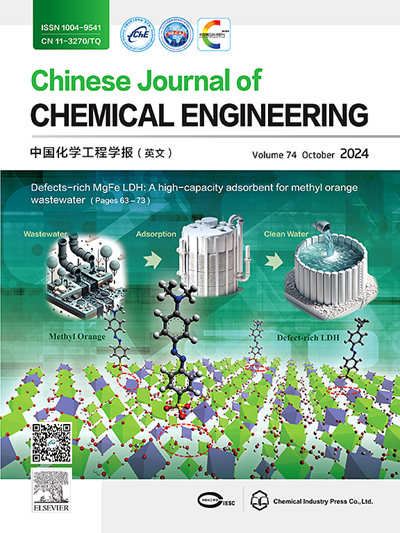超支化聚合物接枝碳纤维增强邻苯二腈/氰酸酯共混复合材料的热老化与热解行为
IF 3.7
3区 工程技术
Q2 ENGINEERING, CHEMICAL
引用次数: 0
摘要
研究了短碳纤维T700SC (SCF)增强含酚邻苯二腈单体(PN75)和双氰酸酯双酚- a (DCBA)复合材料在330 ~ 375℃温度范围内的长期热氧化稳定性和力学性能。研究重点是不同SCF含量的PN75单体和DCBA共混增强SCF复合材料,研究热老化50 h后的质量损失和抗弯强度变化。结果表明,在室温和热老化后,基于PN75/DCBA共混物的scf增强复合材料的抗弯强度始终优于纯共混物。SCF的加入显著提高了复合材料的热稳定性和机械保持性,SCF含量越高,复合材料的性能越好。值得注意的是,在350°C老化后,SCF增强复合材料(30%(质量)SCF)的抗弯强度保持了88.8%,而纯共混材料的抗弯强度为61.1%。形貌分析表明,尽管热老化导致SCF表面的PN75/DCBA共混层降解,但在350℃高温下,复合材料整体结构仍保持良好的力学性能。在375°C时,发生了明显的降解,但复合材料仍然保持在78 MPa以上的抗弯强度。该研究证明了基于PN75/DCBA共混物的scf增强复合材料在高温应用中的潜力,确定了其在氧化环境中长期使用的上限温度。本文章由计算机程序翻译,如有差异,请以英文原文为准。

Thermal aging and pyrolysis behavior of hyperbranched polymers grafted carbon fibers reinforced phthalonitrile/cyanate ester blend composites
This study investigates the long-term thermal-oxidative stability and mechanical properties of phenol-containing phthalonitrile monomer (PN75) and dicyanate ester of bisphenol-A (DCBA) composites reinforced with short carbon fibers T700SC (SCF) within a temperature range of 330−375 °C. The research focuses on the PN75 monomer and DCBA blend reinforced SCF composites with varying SCF content, examining mass loss and changes in flexural strength after thermal aging for 50 h (h). Results show that the SCF-reinforced composites based on the PN75/DCBA blend consistently outperform the neat blend in flexural strength, both at room temperature and after thermal aging. The introduction of the SCF significantly improves the composites' thermal stability and mechanical retention, with higher SCF content correlating to better performance. Notably, after aging at 350 °C, the SCF-reinforced composites based (30% (mass) SCF) retained 88.8% of its flexural strength, compared to 61.1% for the neat blend. Morphological analysis reveals that while thermal aging causes degradation of the PN75/DCBA blend layer on SCF surfaces, the overall composite structure maintains good mechanical properties up to 350 °C. At 375 °C, significant degradation occurs, yet the composites still retain flexural strengths above 78 MPa. This study demonstrates the potential of the SCF-reinforced composites based on PN75/DCBA blend for high-temperature applications, establishing their upper-temperature limit for long-term use in oxidative environments.
求助全文
通过发布文献求助,成功后即可免费获取论文全文。
去求助
来源期刊

Chinese Journal of Chemical Engineering
工程技术-工程:化工
CiteScore
6.60
自引率
5.30%
发文量
4309
审稿时长
31 days
期刊介绍:
The Chinese Journal of Chemical Engineering (Monthly, started in 1982) is the official journal of the Chemical Industry and Engineering Society of China and published by the Chemical Industry Press Co. Ltd. The aim of the journal is to develop the international exchange of scientific and technical information in the field of chemical engineering. It publishes original research papers that cover the major advancements and achievements in chemical engineering in China as well as some articles from overseas contributors.
The topics of journal include chemical engineering, chemical technology, biochemical engineering, energy and environmental engineering and other relevant fields. Papers are published on the basis of their relevance to theoretical research, practical application or potential uses in the industry as Research Papers, Communications, Reviews and Perspectives. Prominent domestic and overseas chemical experts and scholars have been invited to form an International Advisory Board and the Editorial Committee. It enjoys recognition among Chinese academia and industry as a reliable source of information of what is going on in chemical engineering research, both domestic and abroad.
 求助内容:
求助内容: 应助结果提醒方式:
应助结果提醒方式:


